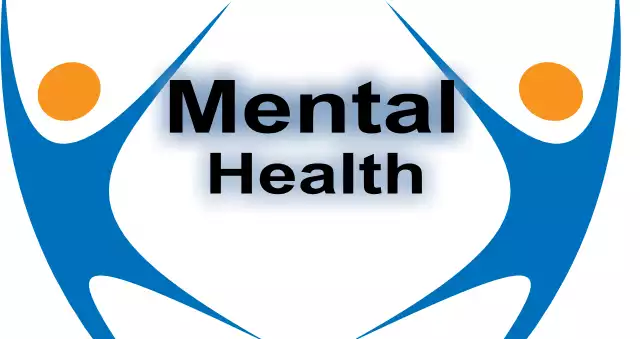Mental Health Safety
In a world where the pace of life seems to quicken with each passing day, mental health safety has emerged as a crucial yet often overlooked aspect of overall well-being.
Imagine navigating your daily routine burdened by invisible weights that threaten to tip the scales at any moment.
The silent struggle for mental equilibrium affects millions, and its impact reverberates across workplaces, homes, and communities.
Mental health safety isn’t just about treating disorders; it’s about creating environments where psychological well-being is prioritized and protected.
From implementing supportive workplace policies to fostering open conversations about mental health issues, there are myriad ways we can contribute to a safer mental landscape for everyone.
This article delves into practical strategies and insights aimed at safeguarding our collective mental health—because when minds are safe, societies thrive.
Mental health is a vital component of overall well-being and is often overlooked in discussions of safety and security.
However, the state of our mental health has a direct impact on our ability to function, think clearly, and make sound decisions.
In recent years, there has been a growing recognition of the importance of mental health in promoting a safe and secure environment for individuals, communities, and organizations.
This shift in perspective has led to the emergence of a new concept known as “mental health safety.
” It encompasses the integration of mental health considerations into safety planning, policies, and practices to mitigate potential risks and promote optimal mental well-being.
In this article, we will explore the concept of mental health safety in depth, examining its significance, key components, and strategies for implementation.
We will also discuss the role of different stakeholders in ensuring mental health safety and the potential benefits it can bring to individuals and society as a whole.
By shedding light on this often neglected aspect of safety, we hope to raise awareness and promote a holistic approach to ensuring the safety and well-being of all individuals, regardless of their mental health status.
Table of Contents Mental Health Safety
Recognize signs of mental distress
One crucial aspect of maintaining mental well-being is being able to recognize signs of mental distress in oneself and others.
While everyone experiences ups and downs in their mood and emotions, it is essential to be aware of when these fluctuations become more persistent or severe.
Some common signs of mental distress may include changes in sleep patterns, appetite, or energy levels, along with feelings of hopelessness, irritability, or overwhelming sadness.
Additionally, individuals may withdraw from social interactions, lose interest in activities they once enjoyed, or experience difficulty concentrating or making decisions.
By understanding and identifying these signs, individuals can take proactive steps to seek appropriate support and intervention, ultimately promoting their overall mental health and well-being.
Prioritize self-care and wellness practices
Engaging in self-care and prioritizing wellness practices is vital for maintaining positive mental health.
Self-care refers to activities and practices that promote one’s physical, emotional, and psychological well-being.
This can include activities such as engaging in regular exercise, practicing mindfulness or meditation, getting enough sleep, and maintaining a balanced and healthy diet.
Prioritizing self-care allows individuals to recharge and rejuvenate, reducing stress levels and enhancing overall resilience.
By incorporating self-care activities into daily routines, individuals can develop healthy coping mechanisms, improve self-esteem, and foster a sense of balance and inner peace.
Taking the time to prioritize self-care and wellness practices is an essential component of maintaining mental health and promoting personal well-being.
Seek professional help when needed
When facing challenges with mental health, it is important to recognize that seeking professional help can play a crucial role in the journey towards well-being.
While self-care practices and support from loved ones can be beneficial, there are instances where the expertise and guidance of mental health professionals are necessary.
These professionals have the training and knowledge to provide evidence-based treatments, therapy, and support tailored to individual needs.
Whether it is managing symptoms of a mental health condition, navigating difficult life transitions, or simply seeking guidance to improve overall mental well-being, reaching out to a professional can provide valuable insights and tools for growth.
Recognizing when professional help is needed and having the courage to seek it demonstrates self-awareness and a commitment to one’s mental health journey.
Remember, seeking professional help is a sign of strength and an investment in your own well-being.
Create a support network
Building a strong support network is another important aspect of maintaining mental health safety.
Surrounding yourself with understanding and empathetic individuals who can offer emotional support can make a significant difference in your well-being.
This network can include family members, friends, or even support groups where you can connect with others who may be facing similar challenges.
These individuals can provide a listening ear, offer encouragement, and provide a sense of belonging and validation.
Additionally, they can help in times of crisis or when you need someone to lean on.
By creating a support network, you are establishing a safety net that can help you navigate the ups and downs of life while promoting overall mental wellness.
Set boundaries to protect yourself
Creating healthy boundaries is another crucial component of maintaining mental health safety.
Setting clear limits and establishing what is acceptable and unacceptable in your relationships and interactions can protect you from emotional harm and ensure your well-being.
This can involve communicating your needs and expectations to others, asserting yourself when necessary, and being firm in enforcing those boundaries.
By doing so, you are safeguarding your mental and emotional health by choosing to prioritize self-care and respect.
Remember, it is not selfish to put yourself first and establish boundaries that promote your well-being; it is essential for maintaining a healthy mindset and protecting yourself from potential stressors and toxic influences.
Educate yourself on warning signs
Understanding and recognizing warning signs is a vital aspect of promoting mental health safety.
By educating yourself on the indicators of deteriorating mental well-being, you can intervene early and seek appropriate support.
Warning signs may vary from person to person, but some common indicators include changes in sleep patterns, appetite, or energy levels, persistent feelings of sadness or hopelessness, increased irritability or anger, withdrawal from social activities, and difficulty concentrating or making decisions.
Additionally, pay attention to any significant changes in behavior, such as engaging in risky or self-destructive activities.
By familiarizing yourself with these warning signs, you can take proactive steps to address mental health challenges and seek assistance from professionals or supportive networks.
Remember, knowledge is power when it comes to safeguarding your mental well-being.
Address underlying issues and triggers
To ensure mental health safety, it is crucial to address underlying issues and triggers that may contribute to psychological distress.
Identifying and exploring these factors can provide valuable insights into the root causes of mental health challenges and guide the development of effective coping strategies.
This process often involves self-reflection, therapy, or counseling sessions to gain a deeper understanding of past traumas, unresolved conflicts, or unhealthy patterns of thinking and behavior.
By addressing these underlying issues, individuals can work towards healing and reducing the impact of triggers on their mental well-being.
It is important to approach this journey with patience and compassion, seeking professional guidance when needed, as it can be a transformative process towards long-term mental health and resilience.
Practice empathy and understanding towards others
Fostering a culture of empathy and understanding towards others is essential for maintaining mental health safety.
It involves recognizing and respecting the unique experiences and perspectives of individuals around us, without judgment or prejudice.
By practicing empathy, we can develop a deeper understanding of others’ emotions, thoughts, and challenges, fostering stronger connections and promoting a sense of belonging.
This can be achieved by actively listening, validating feelings, and offering support when needed.
Empathy not only benefits those receiving it, but also enhances our own emotional well-being by promoting compassion and reducing conflicts.
In our interactions, let us strive to cultivate empathy and understanding, creating a safe and inclusive environment that supports mental health and promotes overall well-being.
In conclusion, mental health safety is a crucial aspect of overall health and well-being.
It is important to prioritize and take care of our mental health just as we do with our physical health.
Seeking professional help and support, practicing self-care and self-compassion, and educating ourselves on mental health can all contribute to creating a safe and healthy mind.
Let us continue to have open and honest conversations about mental health and work towards creating a society that values and supports mental well-being.
Remember, it is always okay to ask for help and take care of ourselves.
FAQ
What are some common warning signs that indicate someone may be experiencing a mental health crisis?
Some common warning signs that indicate someone may be experiencing a mental health crisis include sudden changes in behavior or mood, withdrawal from social activities, increased substance use, extreme emotions, difficulty concentrating or making decisions, changes in eating or sleeping patterns, and expressing thoughts of harming themselves or others.
It’s important to pay attention to these signs and offer support or seek professional help if needed.
How can individuals support a friend or loved one who is struggling with their mental health and may be at risk of harming themselves?
Individuals can support a friend or loved one by actively listening to their concerns, showing empathy and understanding, encouraging professional help or therapy, providing a safe and non-judgmental space for open communication, and helping them access resources or support groups.
It is crucial to take any talk of self-harm seriously and to stay connected with the person to ensure their safety and well-being.
Being patient, compassionate, and available to offer support can make a significant difference in helping them navigate through their mental health challenges.
What are some best practices for creating a safe and supportive environment for individuals with mental health challenges?
Some best practices for creating a safe and supportive environment for individuals with mental health challenges include promoting open communication, offering access to professional mental health resources, providing education and training on mental health awareness, fostering non-judgmental attitudes, encouraging self-care practices, promoting a sense of community and belonging, and ensuring confidentiality and privacy.
It is important to create a stigma-free space where individuals feel comfortable seeking help and support without fear of discrimination or stigma.
By implementing these practices, individuals with mental health challenges can feel valued, understood, and empowered in their journey towards healing and recovery.
How can employers promote mental health safety in the workplace and support employees who may be struggling?
Employers can promote mental health safety by creating a stigma-free environment, offering mental health resources, providing training on mental health awareness, encouraging work-life balance, implementing flexible work arrangements, fostering open communication, supporting employee well-being programs, and offering confidential counseling services.
It is important for employers to prioritize mental health, educate employees on available resources, and create a supportive culture where individuals feel comfortable seeking help when needed.
By taking these proactive steps, employers can create a positive and inclusive work environment that promotes mental health safety and supports employees who may be struggling.
What resources are available for individuals in crisis or in need of mental health support?
Individuals in crisis or in need of mental health support can access resources such as crisis hotlines, therapy services, support groups, online counseling platforms, mental health apps, and community mental health centers.
Additionally, many organizations and hospitals offer mental health screenings, counseling services, and psychiatric evaluations for those seeking help.
It’s important to reach out to loved ones, mental health professionals, or emergency services if you or someone you know is struggling with mental health issues.
Remember, you are not alone, and help is available.







